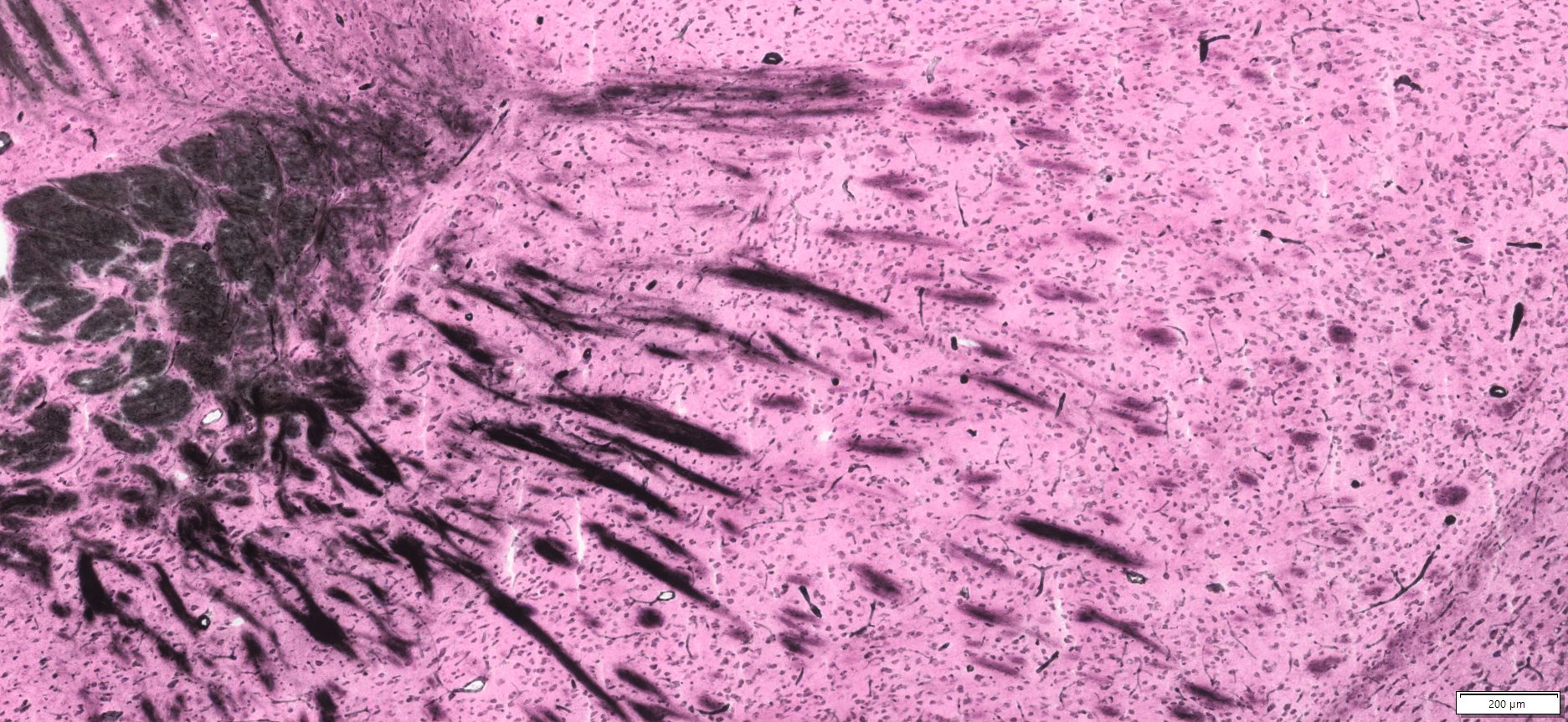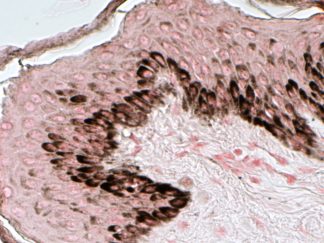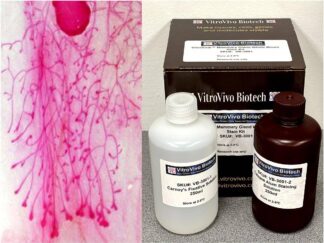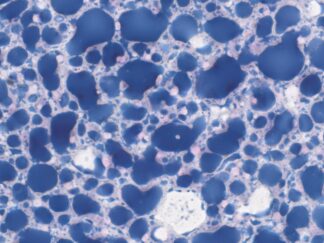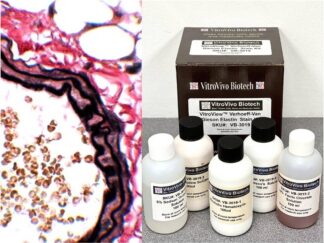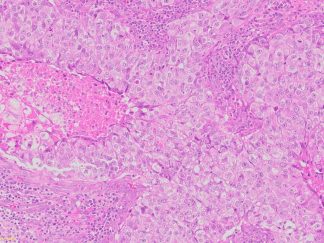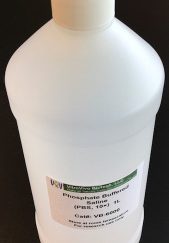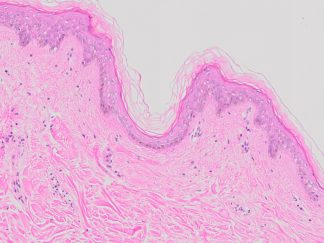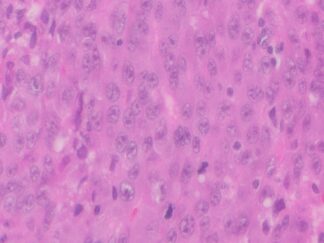Description
Gallyas silver stain is a specialized histological staining technique widely employed in neuroscience research to visualize pathological alterations, notably neurofibrillary tangles and senile plaques, prevalent in neurodegenerative conditions like Alzheimer’s disease. This staining approach selectively targets paired helical filaments, comprising hyperphosphorylated tau protein, facilitating their detection and microscopic examination. Renowned for its ability to provide high contrast and resolution, Gallyas silver stain serves as a pivotal tool in deciphering the intricate structures of the brain and elucidating the underlying mechanisms of diverse neurological disorders. The VitroView™ Gallyas Silver Stain Kit is a meticulously optimized staining kit specifically designed for identifying changes associated with neurofibrillary tangles and senile plaques within the brain.
Kit Contents
| VB-3037-1 | 0.25% potassium permanganate | 100 ml |
| VB-3037-2 | 2% oxalic acid | 100 ml |
| VB-3037-3 | 5% periodic acid | 100 ml |
| VB-3037-4 | Silver iodide solution A | 3.3 ml |
| VB-3037-5 | Silver iodide solution B | 100 ml |
| VB-3037-6 | 0.5% acetic acid | 250 ml |
| VB-3037-7 | Developer solution A | 50 ml |
| VB-3016-8 | Developer solution B | 25 ml |
| VB-3037-9 | Developer solution C | 25 ml |
| VB-3037-10 | Nuclear fast red solution | 100 ml |
Storage Condition
Nuclear fast red solution: Store at room temperature.
The others : Store at 2–8°C.
Staining Procedures for FFPE Tissue Sections
-
- Deparaffinizing the tissue sections in Xylene I for 6 minutes followed by Xylene II for another 6 minutes.
- Rehydrate the sections sequentially: a. Ethanol 100% for 2 minutes, b. Ethanol 100% for another 2 minutes, c. Ethanol 95% for 2 minutes, d. Ethanol 95% for an additional 2 minutes, and e. Ethanol 70% for 2 minutes.
- Rinse the sections thoroughly in distilled water for 5 minutes.
- Incubate the sections in 0.25% potassium permanganate at room temperature for 15 minutes.
- Wash the sections in gentle running lukewarm tap water for 1 minute.
- Incubate the sections in 2% oxalic acid at room temperature for 2 minutes.
- Wash the sections in gentle running lukewarm tap water for 1 minute.
- Incubate the sections in 5% periodic acid at room temperature for 7.5 minutes.
- Wash the sections in gentle running lukewarm tap water for 1 minute.
- Prepare the working silver iodide solution by mixing 0.33ml of Silver iodide solution A with 10ml of Silver iodide solution B.
- Incubate the sections in the working silver iodide solution at room temperature for 1-2 minutes, protecting them from light.
- Transfer the slides to 0.5% acetic acid for 2 rounds of 5-minute incubations.
- Wash the sections in gentle running lukewarm tap water for 1 minute.
- Prepare the developer working solution by mixing Developer solution A, B, and C at a ratio of 2:1:1.
- Incubate the slides in the developer working solution for 30-45 minutes (or approximately 15 minutes for paraffin sections), monitoring under a microscope for development and protecting from light.
- Stop the reaction by incubating the sections in 0.5% acetic acid for 2 rounds of 5-minute incubations.
- Optionally, counterstained with nuclear fast red for 1-2 minutes if necessary.
- Wash the sections in gentle running lukewarm tap water for 1 minute.
- Perform two washes with distilled water for 5 minutes each. Dehydrate the sections with 2 dips of 95% Ethanol followed by 2 changes of 100% Ethanol (2 minutes per change).
- Clear the sections with 3 changes of xylene (5 minutes per change) and coverslip using Permount or another suitable organic mounting medium.
Control: Brain
Expected Results
- Myelin and erythrocytes———–black
- Nuclei ———————————red
More Images
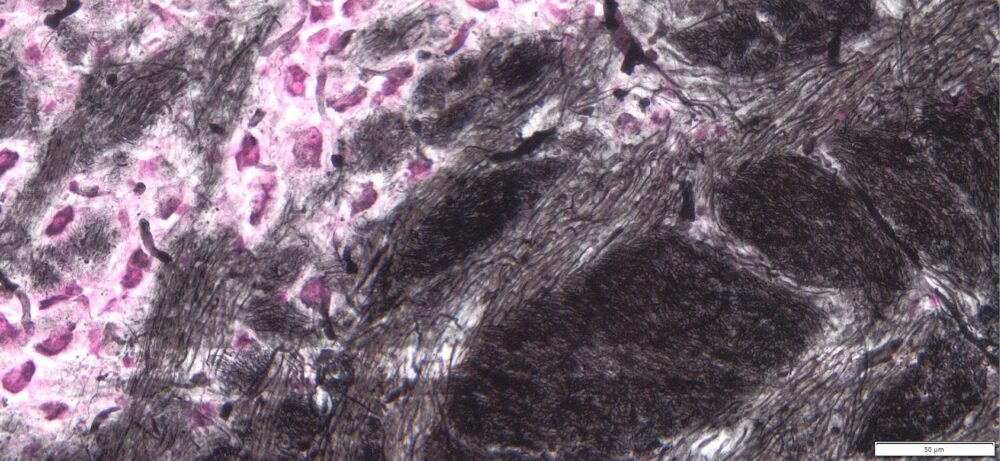
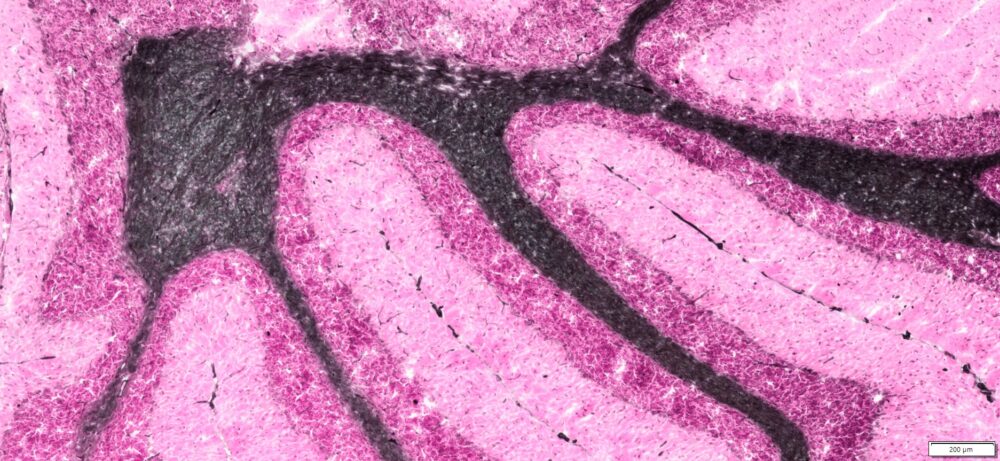
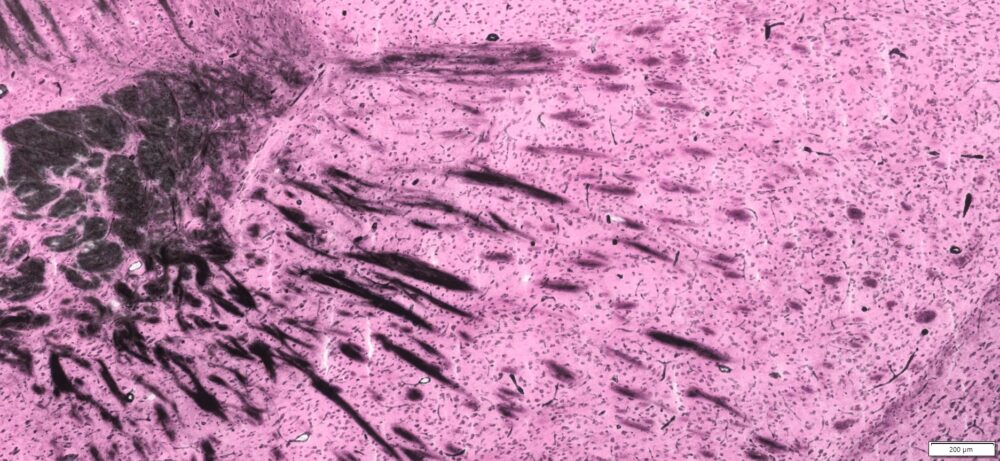
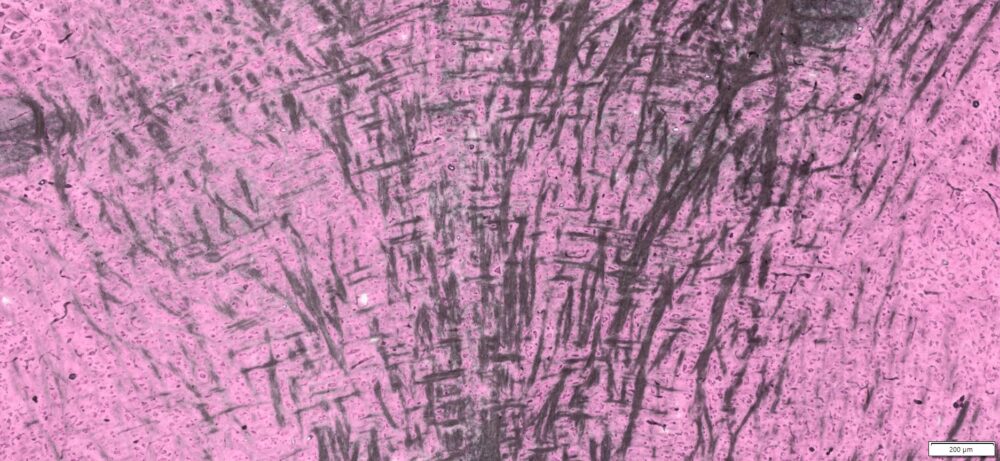
Precautions
- Handle reagents with care.
- Avoid contact with eyes, skin, or clothing.
- Do not ingest.
- Always wear gloves when handling chemicals.

